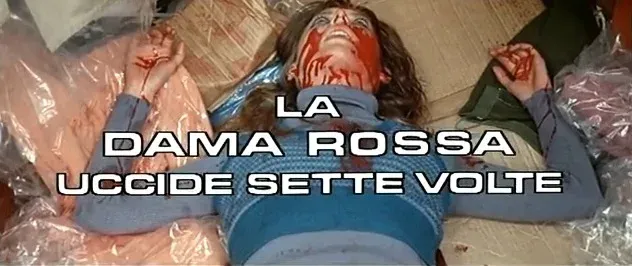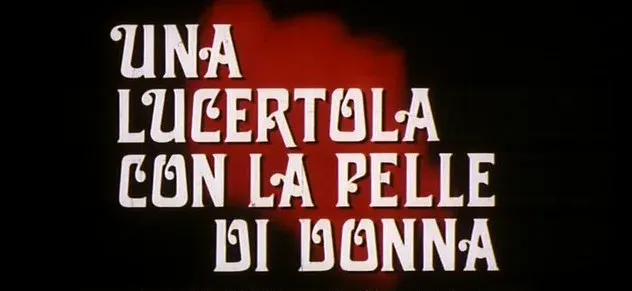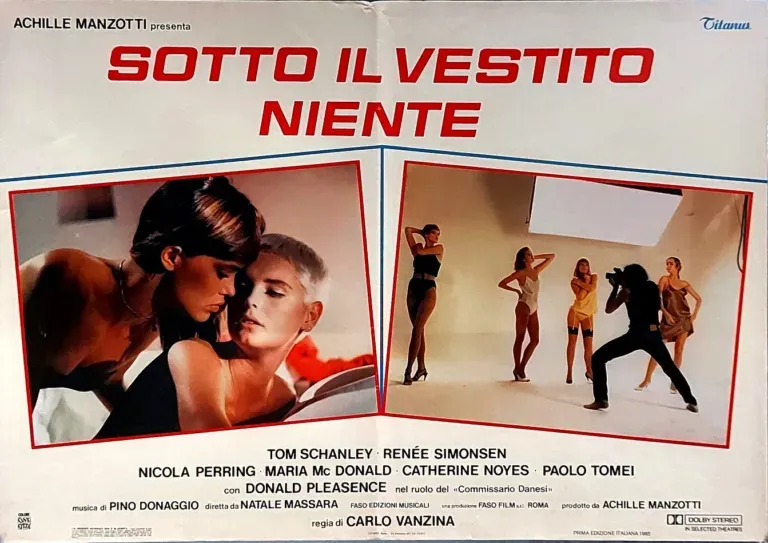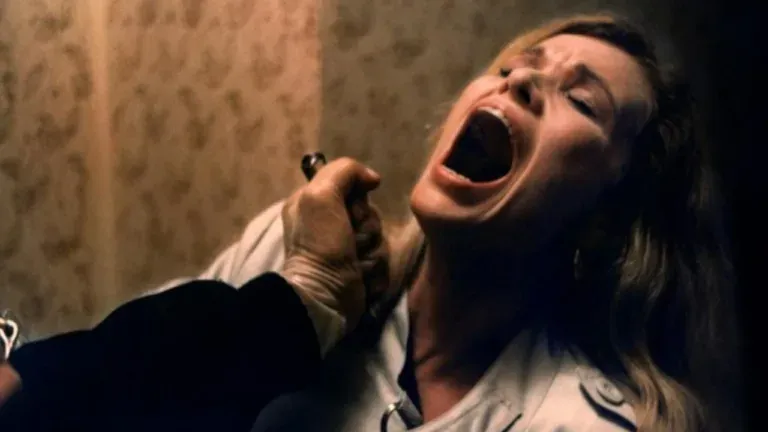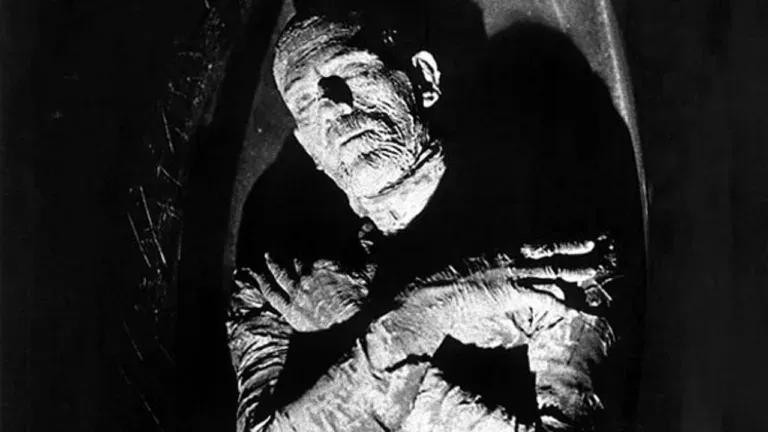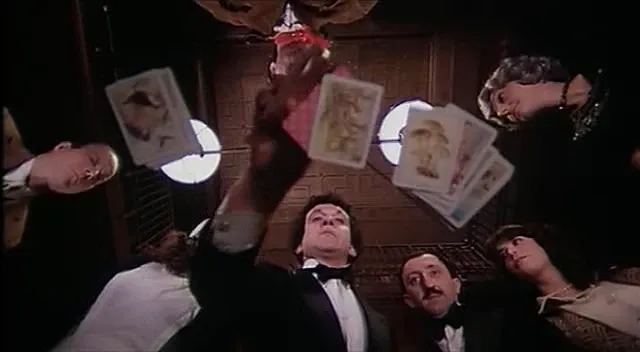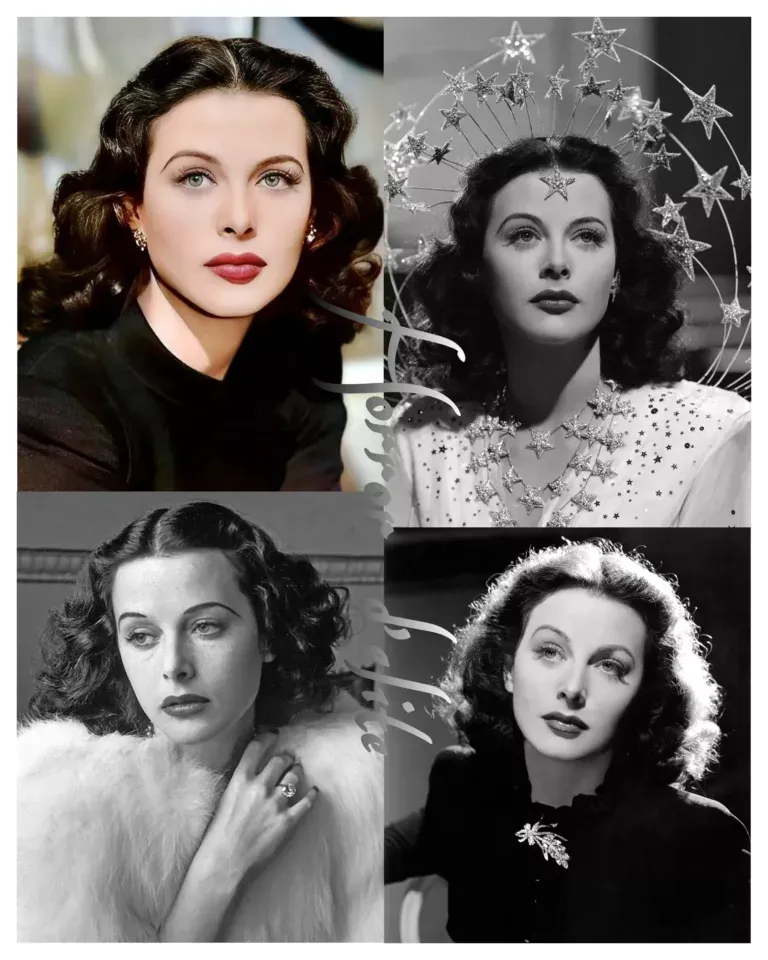The Red Queen Kills Seven Times
Original Title: The Red Queen Kills Seven Times
Year: 1972
Director: Emilio P. Miraglia
Screenplay: Emilio P. Miraglia, Fabio Pittorru
Main Cast: Barbara Bouchet, Ugo Pagliai, Marina Malfatti, Marino Masé, Pia Giancaro
Genre: Giallo, Thriller
Soundtrack: Bruno Nicolai
Introduction
The Red Queen Kills Seven Times is a 1972 film directed by Emilio P. Miraglia, a director known for his contributions to the Italian giallo genre. The film is a perfect example of this subgenre, which reached its peak in the 1960s and 1970s, characterized by intricate plots, mysterious murders, and a unique visual style. With an engaging narrative and an atmosphere filled with suspense, *The Red Queen Kills Seven Times* remains a milestone in Italian genre cinema.
Plot
The story takes place in Germany and begins with a family legend that tells of a centuries-old curse: every hundred years, a Red Queen rises from the grave to kill seven people, including a family member. The plot follows two sisters, Kitty (Barbara Bouchet) and Evelyn Wildenbrück (Marina Malfatti), and their connection to this macabre legend.
After the mysterious death of Evelyn, Kitty begins to be haunted by visions of the Red Queen and a series of brutal murders that seem to confirm the curse. As the police investigate the crimes, Kitty tries to uncover the truth behind the legend and her family’s involvement, leading to a series of shocking twists and revelations.
Main Characters
Kitty Wildenbrück (Barbara Bouchet): The protagonist, a young woman trapped in a family nightmare. Kitty is strong and determined but is caught up in events and visions of the Red Queen. Martin Hoffmann (Ugo Pagliai): A photographer and Kitty’s boyfriend, who becomes a crucial ally in the search for the truth. Evelyn Wildenbrück (Marina Malfatti): Kitty’s sister, whose death triggers the mysterious and gruesome events. Herbert Zieler (Marino Masé): A shady character with complex ties to the Wildenbrück sisters. Franziska Wildenbrück (Pia Giancaro): Another family member involved in the mystery and family tensions.
Themes and Style
Suspense and Psychological Tension:
Miraglia skillfully uses suspense to create an atmosphere of constant tension and uncertainty. Claustrophobic framing and the use of light and shadow enhance the sense of paranoia and looming danger.
The Aesthetic of Giallo:
The film adopts a distinctive visual aesthetic typical of Italian giallo, with vibrant photography, saturated colors, and innovative lighting. The costumes and sets reflect the fashion and style of the era, adding another layer of authenticity and immersion.
Bruno Nicolai’s Soundtrack:
The music plays a crucial role in creating the film’s atmosphere. Bruno Nicolai’s soundtrack is rich with haunting melodies and orchestral arrangements that underline moments of tension and suspense. The music not only accompanies the scenes but amplifies them, making the cinematic experience even more engaging.
Themes of Vulnerability and Female Power:
The film explores themes of vulnerability and power through the character of Kitty. Despite being surrounded by danger and suspicion, Kitty demonstrates remarkable resilience and determination. This contrast between vulnerability and strength is a defining feature of the character, making her a complex and fascinating figure.
Psychological Analysis
The Red Queen Kills Seven Times offers a deep exploration of the psychology of its characters. Kitty, in particular, is portrayed as a young woman who must face her deepest fears while trying to maintain her sanity. The psychological tension is palpable, with characters constantly questioning their perceptions and each other’s motives.
Acting Performances
Barbara Bouchet: Delivers a convincing and intense performance, perfectly capturing Kitty’s vulnerability and determination. Her ability to convey a range of complex emotions significantly contributes to the film’s effectiveness. Ugo Pagliai: Solid in the role of Martin, creating a character who is both protective and intriguing. Marina Malfatti: Charismatic and ambiguous in the role of Evelyn, contributing to the atmosphere of mystery and suspicion. Marino Masé and Pia Giancaro: Offer strong performances, helping to create a believable and immersive world in which the story unfolds.
Critical Reception
Upon its release, The Red Queen Kills Seven Times received mixed reviews from critics. While some praised Miraglia’s direction and the performances of the cast, others criticized the film for its convoluted plot and certain genre clichés. However, over time, the film has been reevaluated and is now considered a classic of Italian giallo, appreciated for its unique atmosphere and gripping storyline.
Influence and Legacy
The film has had a significant influence on many subsequent directors and continues to be a reference point for genre enthusiasts. Its ability to blend psychological suspense, stylized violence, and a strong visual aesthetic makes it an excellent example of how Italian giallo was able to innovate and captivate international audiences.
Conclusion
The Red Queen Kills Seven Times perfectly embodies the distinctive characteristics of Italian giallo. Emilio P. Miraglia’s direction, Bruno Nicolai’s soundtrack, and the compelling performances of the cast come together to create a fascinating and memorable work. For fans of the genre, this film is a must-see, a journey into a labyrinth of terror and mystery that continues to intrigue and frighten decades after its creation.
Click here to watch our Elite trailer
 Subscribe to our YouTube channel
Subscribe to our YouTube channel
For vintage film lovers, we recommend checking out Retroterror
